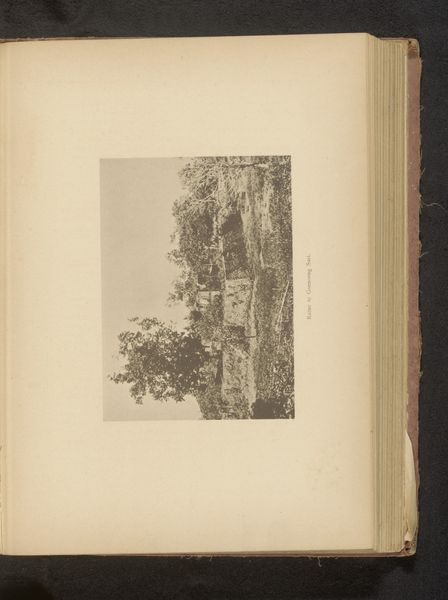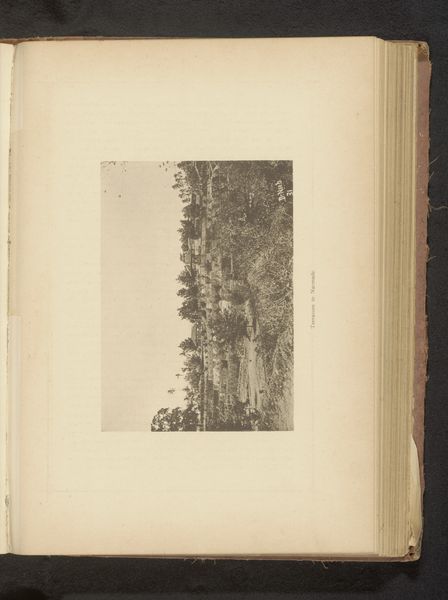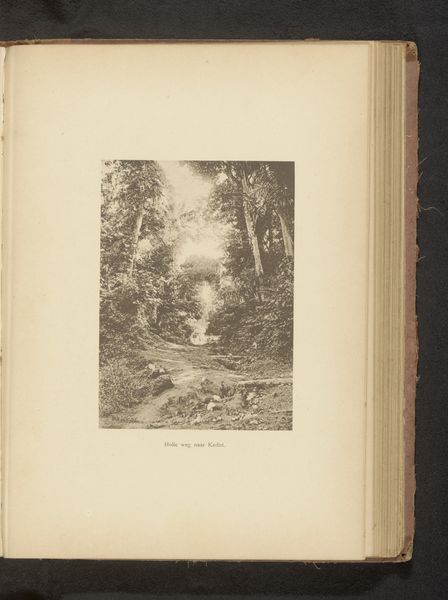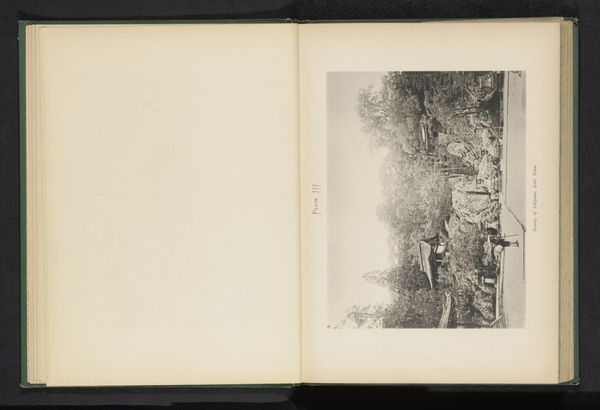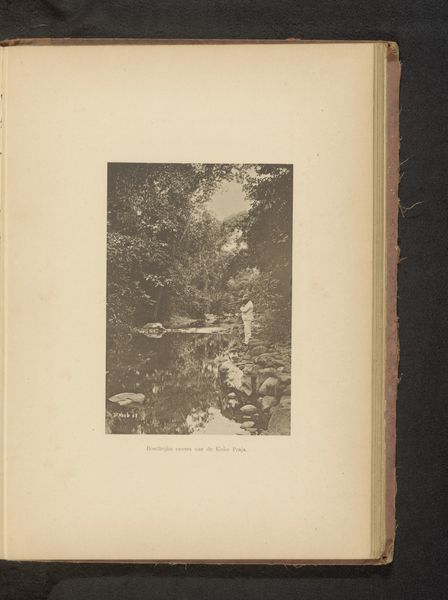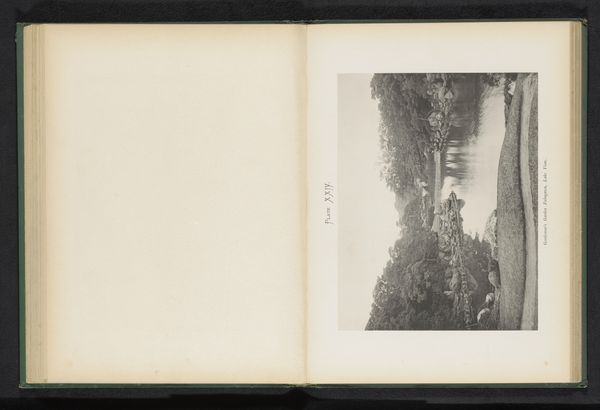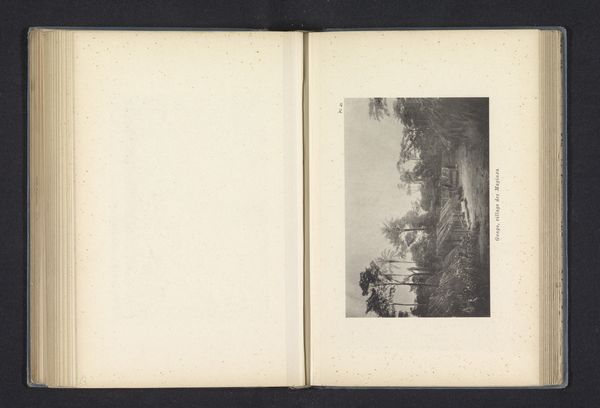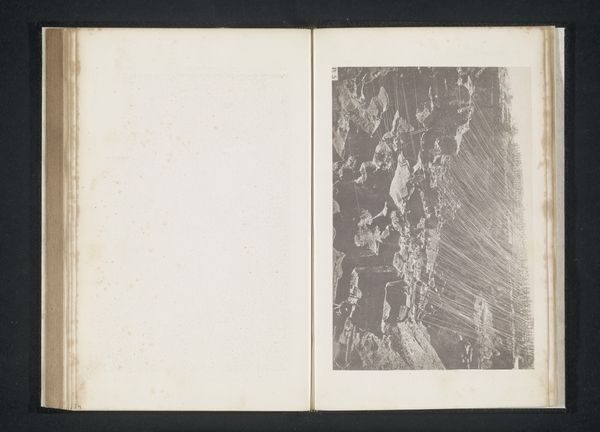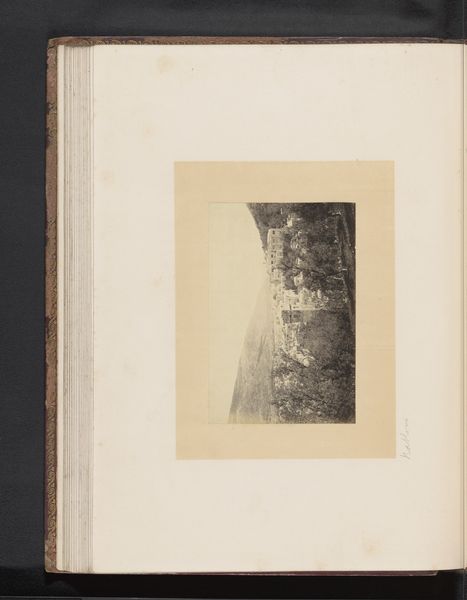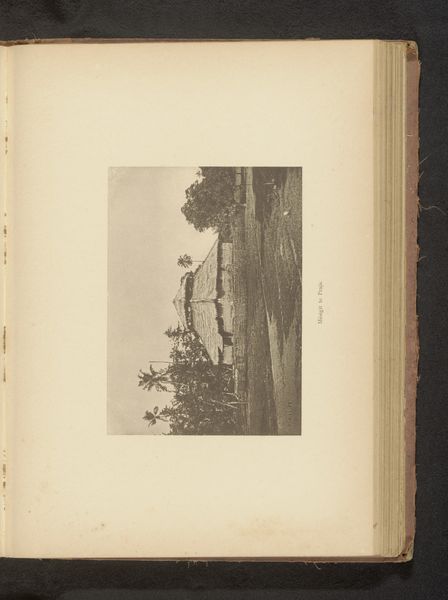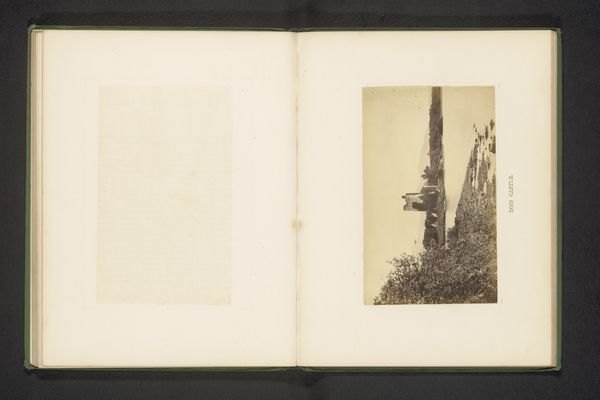
photography
#
photography
Dimensions: height 121 mm, width 167 mm
Copyright: Rijks Museum: Open Domain
Curator: This photograph is entitled "Gezicht op een water te Narmada," which translates to "View of a Water at Narmada," taken before 1897 by Christiaan Johan Neeb. Editor: The stillness of the scene is what strikes me. The subdued lighting and detailed capture of nature’s undisturbed reflection upon the Narmada River creates a moment frozen in time. It speaks of serene landscapes, removed from contemporary anxieties. Curator: Indeed. During this period, photography in the Dutch East Indies, where Neeb worked, often served colonial interests, documenting landscapes, resources, and the lives of indigenous populations. Consider what is left out as much as what is included. This curated view reinforces notions of a tranquil, bountiful land awaiting external influence. Editor: Right. It’s vital we question the romanticized depictions of such photographs. How did such portrayals mask, even legitimize, the complexities of colonial encounters, obscuring both social inequalities and environmental impacts that were invariably tied to this perceived "bounty?” What political function does it play in constructing that imagery? Curator: Precisely. The technical aspects are also significant; early photographic methods involved a certain amount of manipulation and staging. The level of sharpness, even contrast, can be strategically modified. Understanding this controlled element helps contextualize the supposed authenticity of what we see. This specific image contributes to a larger narrative constructed around colonial encounters and power structures prevalent in that historical context. Editor: By recognizing the photographic conventions used, and situating this particular photograph within colonial social history, we move beyond the picturesque and grapple with how such landscapes worked as agents in cultural imposition and political authority. Looking closer, asking tougher questions about beauty in photography helps make visible historical processes it once obfuscated. Curator: I agree entirely. Reflecting on how this imagery has impacted post-colonial identities and ecological justice reveals enduring challenges that should make us question whose story the picture tells, and whom it silences. Editor: It reminds us that historical art, especially art portraying foreign lands, has shaped many of our modern geopolitical views, reinforcing an ongoing need to deconstruct and re-evaluate such depictions.
Comments
No comments
Be the first to comment and join the conversation on the ultimate creative platform.
